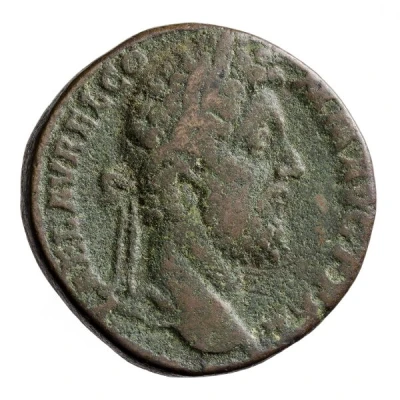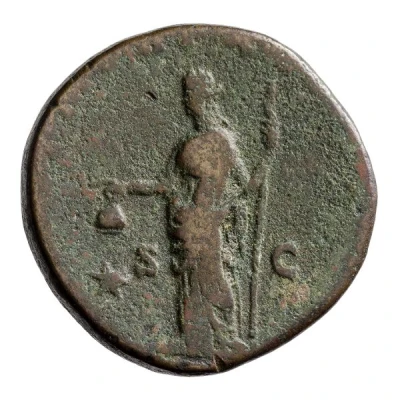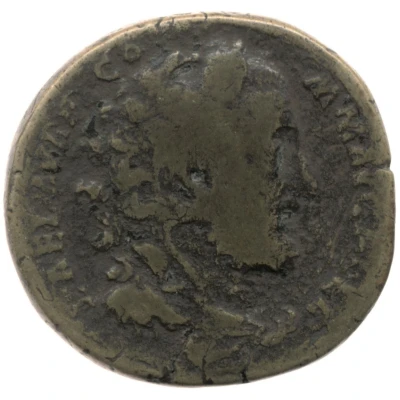


© Münzkabinett der Universität Göttingen (CC BY-NC 4.0 DE)
Sestertius - Commodus LIB AVG P M TR P XVII IMP VIII COS VII P P S C; Libertas
192 year| Bronze | 20.8 g | - |
| Issuer | Rome › Roman Empire (27 BC - 395 AD) |
|---|---|
| Emperor | Commodus (Lucius Aurelius Commodus) (177-192) |
| Type | Standard circulation coin |
| Year | 192 |
| Value | 1 Sestertius = ¼ Denarius |
| Currency | Denarius, Reform of Augustus (27 BC – AD 215) |
| Composition | Bronze |
| Weight | 20.8 g |
| Shape | Round (irregular) |
| Technique | Hammered |
| Demonetized | Yes |
| Updated | 2024-10-06 |
| Numista | N#266012 |
|---|---|
| Rarity index | 100% |
Reverse
Libertas, draped, standing left, holding pileus in extended right hand and rod in left hand; in field, sometimes star.
Script: Latin
Lettering: LIB AVG P M TR P XVII IMP VIII COS VII P P S C
Translation:
Liberalitas Augustorum, Pontifex Maximus, Tribunicia Potestate Septima Decima, Imperator Octavum, Consul Septimum, Pater Patriae. Senatus Consultum.
The liberality of the emperor (Augustus), high priest, holder of tribunician power for the 17th time, supreme commander (Imperator) for the eighth time, consul for the seventh time, father of the nation. Decree of the senate.
Comment
Example of this type:Münzkabinett der Universität Göttingen
Source:
Online Coins of the Roman Empire (OCRE)
Interesting fact
One interesting fact about this coin is that it features an image of the Roman goddess Libertas on the reverse side, which symbolizes freedom and liberty. This is fitting, as the name Commodus means "commodity" or "prosperity" in Latin, and the coin was likely minted during a time of relative peace and prosperity in the Roman Empire. Additionally, the use of bronze as the material for the coin was a common practice during this time period, as it was a durable and affordable metal that could be easily minted and distributed. Overall, this coin provides a unique glimpse into the economic and cultural practices of ancient Rome during the reign of Commodus.

